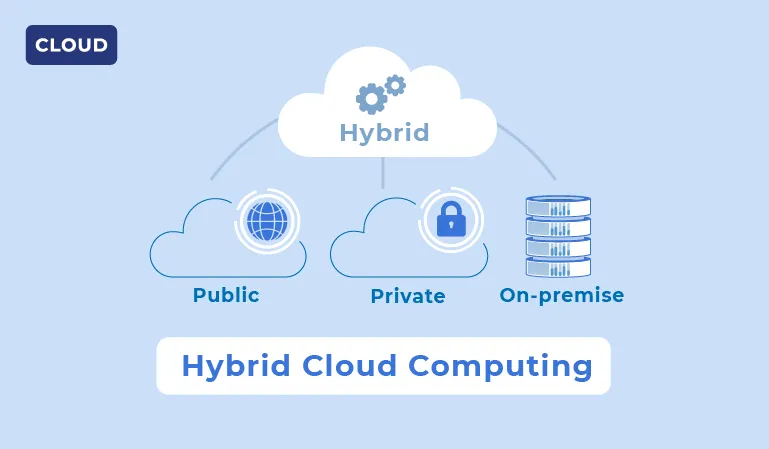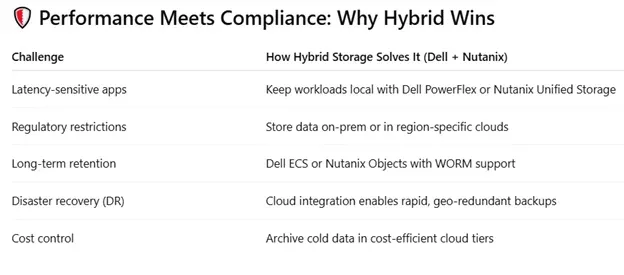Data explosion, performance and compliance are no longer optional—they’re essential.
As enterprises increasingly face challenges balancing data locality, accessibility, and regulation, hybrid storage models—especially those powered by Dell and Nutanix—offer a strategic advantage.
Hybrid Storage Models

Hybrid storage refers to the integration of on-premises and cloud-based storage environments, offering flexibility in data placement, speed, and control. With this model, enterprises can:
-
Store frequently accessed (hot) data on high-performance infrastructure.
-
Archive less-critical (cold) data on cost-effective cloud storage.
-
Comply with data sovereignty laws by keeping sensitive information on-prem.
Hybrid doesn’t just mean flexibility—it means optimization.
Dell and Nutanix
Enterprise-Grade Control with PowerFlex & ECS
Dell PowerFlex brings together block and file storage into a unified platform that supports mission-critical apps with high performance, scalability, and resiliency.
When paired with Dell ECS (Elastic Cloud Storage), businesses gain an S3-compatible cloud archive that meets long-term storage and compliance needs.
Key benefits:
-
Low latency storage for demanding workloads.
-
Seamless tiering to ECS for cloud-scale archiving.
-
Integration with governance tools for compliance.
Example Use Case: A healthcare provider uses Dell PowerFlex for EHR systems and ECS to retain patient records per HIPAA requirements.
Unified Storage & Hybrid Multicloud Architecture
Nutanix breaks the boundaries of traditional storage with Unified Storage (Files, Objects, and Blocks) built into the Nutanix Cloud Platform (NCP).
The platform supports hybrid multicloud deployments across private data centers, AWS, Azure, and GCP.
Key features:
-
Intelligent tiering based on policy and performance.
-
Data locality awareness for compliance and latency reduction.
-
Built-in ransomware protection, audit logging, and immutable snapshots.
Example Use Case: A financial institution runs trading apps on-prem with Nutanix Files while archiving reports and logs on Nutanix Objects in AWS to meet SEC and FINRA compliance.

Ensuring Compliance
Security and compliance are baked into both Dell and Nutanix architectures:
-
Dell ECS provides data encryption, WORM (Write Once Read Many), and legal hold features.
-
Nutanix offers Data Lens for audit trails, compliance scoring, and real-time threat detection.
Pairing these with access controls, automated policies, and audit reports ensures that enterprises meet evolving standards like GDPR, HIPAA, CCPA, and ISO 27001.
Best Practices for Implementation
Classify Data – Understand which data needs performance vs. long-term retention.
Define Policies – Set access and archival rules based on regulatory needs.
Integrate Monitoring – Use tools like Dell CloudIQ and Nutanix Prism for visibility.
Leverage Automation – Automate data tiering and snapshots to reduce overhead.
Plan for DR – Use cross-cloud replication and geo-redundancy for resilience.
Hybrid storage isn’t just a trend—it’s a pragmatic strategy for modern IT. With industry leaders like Dell and Nutanix, businesses don’t have to choose between performance and compliance—they can have both.







